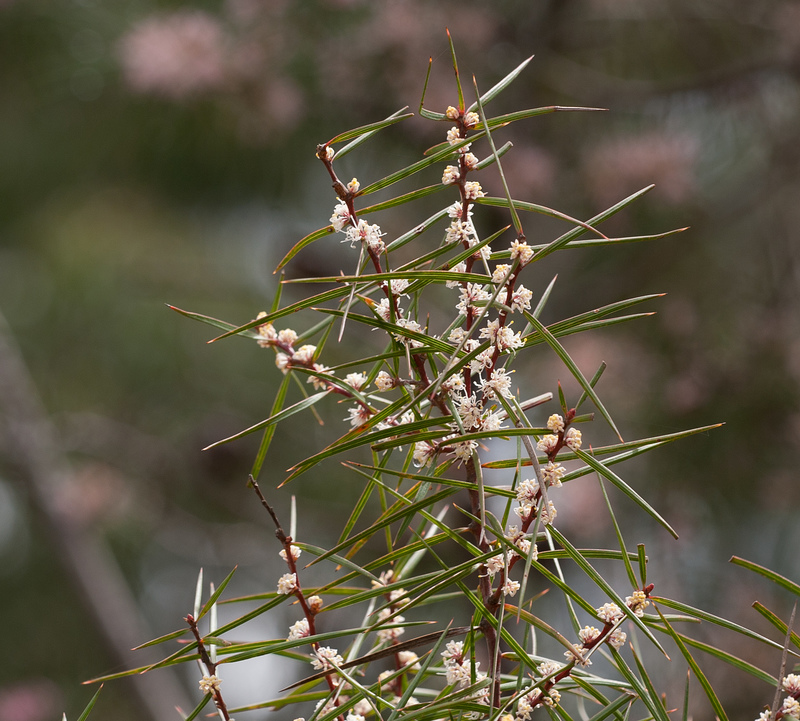Furze hakea
(Hakea ulicina)

Description
Hakea ulicina, commonly known as furze hakea, is a shrub in the family Proteaceae, native to Australia. It is erect in habit, growing to between 2 and 5 metres tall. It has long, narrow leaves which are 3 to 18 cm long and 1 to 4 mm wide. White conflorescences appear in the leaf axils in spring. The species was first formally described by Robert Brown in Supplementum primum prodromi florae Novae Hollandiae in 1830, based on plant material collected by William Baxter in Wilsons Promontory. The species occurs on the southern slopes of the Great Dividing Range as well as in coastal heathland. It is mostly found from the east of Port Phillip Bay in Victoria through to Eden in south-eastern New South Wales. Additional populations occur in the Brisbane Ranges and Anglesea to the west of Port Phillip Bay, as well as Tasmania's Furneaux Group of islands. A similar species from South Australia and western Victoria, Hakea repullulans, can be distinguished by its broader leaves and presence of a lignotuber.
Taxonomic tree:







